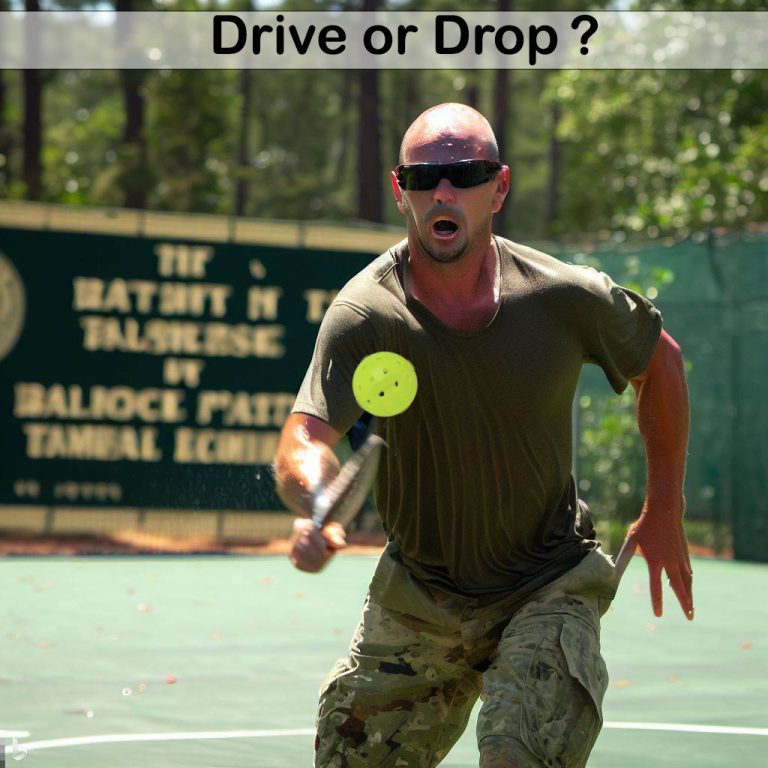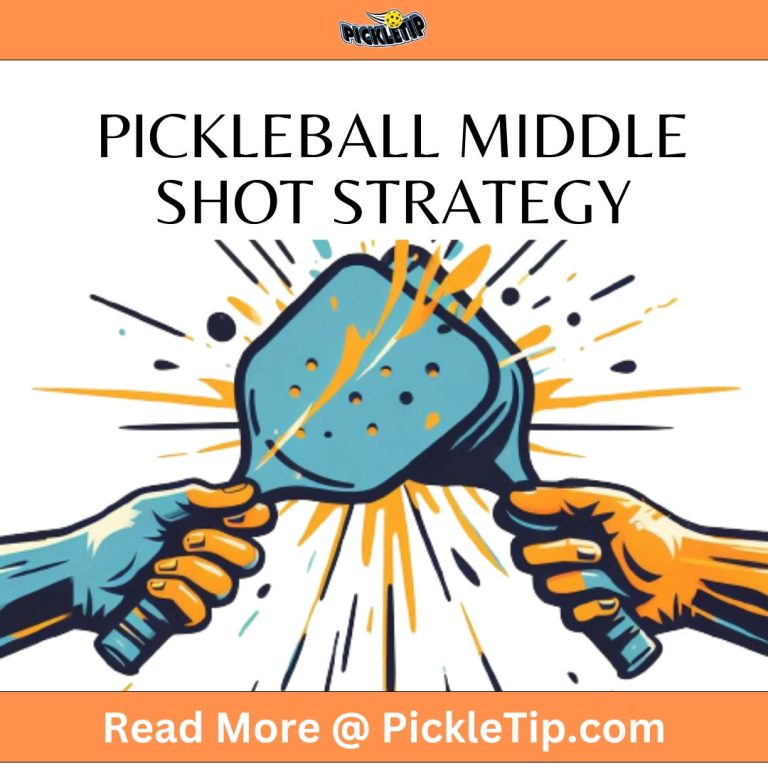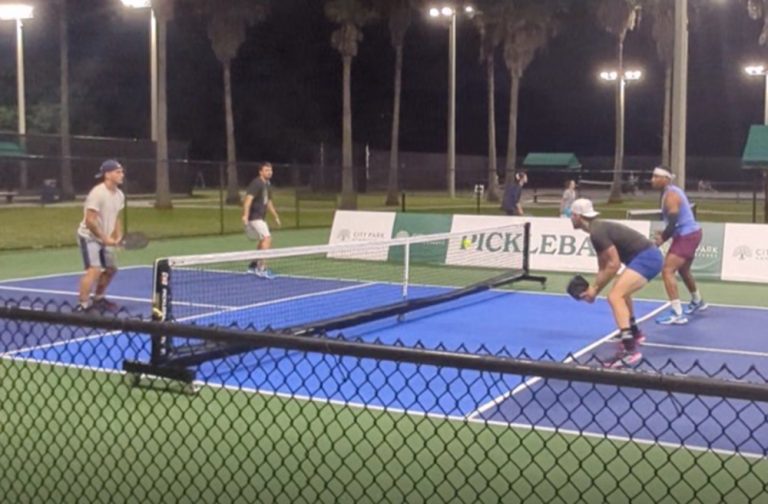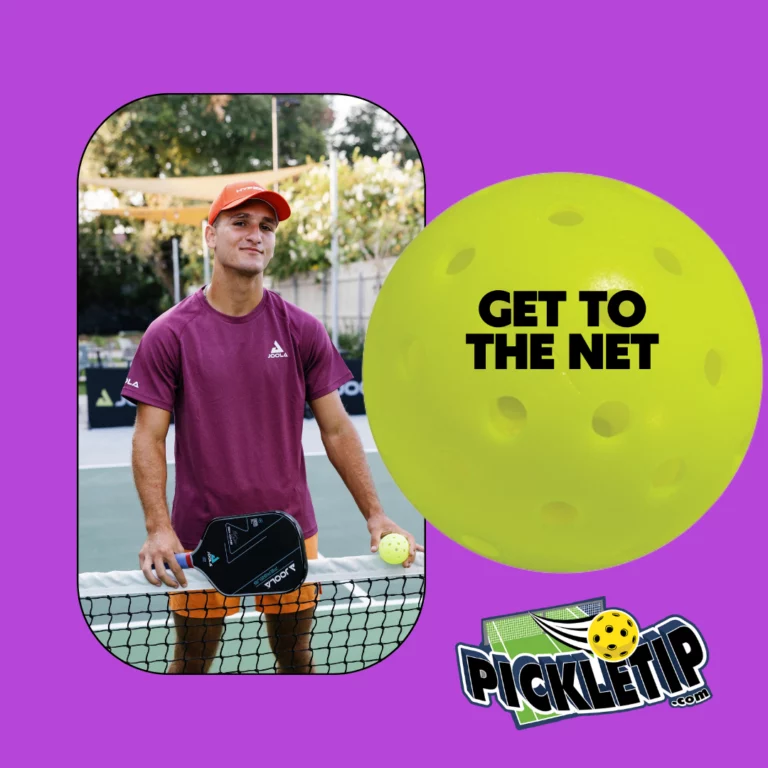How to Avoid Pop-Ups in Pickleball
Stop Hitting Pop-Ups in Pickleball
Pickleball offers an exhilarating experience for players of all levels. However, pop-ups can disrupt the flow of the game and leave players vulnerable. This article aims to demystify the causes of pop-ups in pickleball and provide practical strategies to minimize them, enhancing your gameplay and enjoyment.
Understanding the Causes of Pop-Ups in Pickleball
Common causes of pop-ups include grip pressure, paddle face angle, and responding to your opponent’s pace. Soft hands at the net are essential, and a grip pressure of three or four out of ten is recommended. The paddle face should not be straight up and down; a 90-degree angle is more effective in preventing the ball from popping up.
Common Causes of Pop-Ups
- Grip Pressure: Soft hands at the net are essential. Aim for a grip pressure of three or four out of ten, allowing the paddle to move slightly in your hand. A soft grip is crucial. Avoid a death grip on the paddle, as it can lead to pop-ups. Practice hitting with minimal finger contact to develop soft hands.
- Paddle Face Angle: Avoid a straight up-and-down paddle face. A 90-degree angle is more effective in preventing the ball from popping up.
- Pace and Responding to Opponent’s Pace: Focus on your opponent’s pace and respond calmly, without matching their speed, especially when they hit hard. Read their body language and adjust accordingly.
- Dealing with Topspin: Recognize topspin by the appearance of the ball and adjust your hitting point lower to prevent the ball from going too high.
- Backswing: Opt for short, compact backswings, especially when dinking.
- Point of Contact: Strike the ball comfortably out in front of your body, avoiding too close or too far out front.
- Moving While Hitting: Perform a split step and avoid moving while hitting to reduce pop-ups.
- Flicking Wrist or Breaking Elbow: Keep your wrist stable and lift from your shoulder for controlled shots.
- Not Being Ready: Stay in an athletic stance with your knees bent and paddle up.
- Spin Overpowering: Pay attention to the spin and adjust your shot accordingly.
- Dinking Over the Highest Part of the Net: Consider hitting most dinks crosscourt or into the middle of the court.
- Attacking Under Pressure: Avoid attacking when surprised or under pressure; use soft hands to block or reset.
Effective Techniques to Minimize Pop-Ups in Pickleball
Use a pendulum swing from the shoulder when dinking and maintain balance while volleying to avoid overreaching. Quick decision-making is crucial, especially when deciding whether to take the ball out of the air. Focus on short, compact backswings and make contact with the ball comfortably out in front of your body.
Specific Strategies for Dinks, Drops, Resets
- Softening your hands for dinks and drops is essential.
- Keep the ball in front of you and avoid overreaching.
- Push the ball with your paddle rather than swinging too much.
- For a pendulum swing, keep your wrist to the side of the paddle and swing flat across the ball.
- Check your grip pressure; if too tight, shots tend to ricochet off harder and higher.
- Relax and take your time. Most of the time, you have more time than you think.
- Gain balance by coming to a complete stop before hitting the ball for more control.
Drills and Practices to Reduce Pop-Ups in Pickleball
Engage in drills that focus on controlled dinks and resets. Practice absorbing power in dinking exchanges and use wall drills for individual practice, focusing on footwork and decision-making.
- Dinking Drills: Improve control over the net and develop a soft touch by playing a game of dinks only, focusing on keeping the ball low.
- Volley-to-Volley Drill: Enhance volley control and reduce overhitting by exchanging volleys with a partner at the non-volley zone line.
- Third Shot Drop Practice: Master the third shot drop to prevent high returns by practicing soft drop shots into the kitchen.
- Wall Rally Drill: Improve paddle control and reaction time by hitting the ball against a wall, alternating forehand and backhand shots.
- Target Practice: Develop accuracy and control by hitting the ball to targets placed in different areas of the court.
- Footwork Drills: Enhance movement and positioning with ladder drills or cone drills to improve agility.
- Paddle Angle Control: Learn to adjust the paddle face angle for different shots and achieve a consistent, low trajectory.
- Pressure Situations Drill: Improve performance under pressure by playing out points from disadvantageous positions.
- Spin Recognition and Response: Learn to handle different spins by practicing adjusting shots to counteract the spin effectively.
- Consistency Drill: Build consistent stroke mechanics by rallying and counting consecutive shots without errors or pop-ups.
No More Pop-Ups in Pickleball
While it’s unrealistic to expect never to pop the ball up again, the tips and strategies discussed in this article should significantly reduce the frequency of these frustrating moments. With improved techniques and practices, you’ll find yourself more in control and less vulnerable on the pickleball court. Focus on limiting Pop-Ups in Pickleball, and remember, practice and patience are your best allies in mastering these skills.







